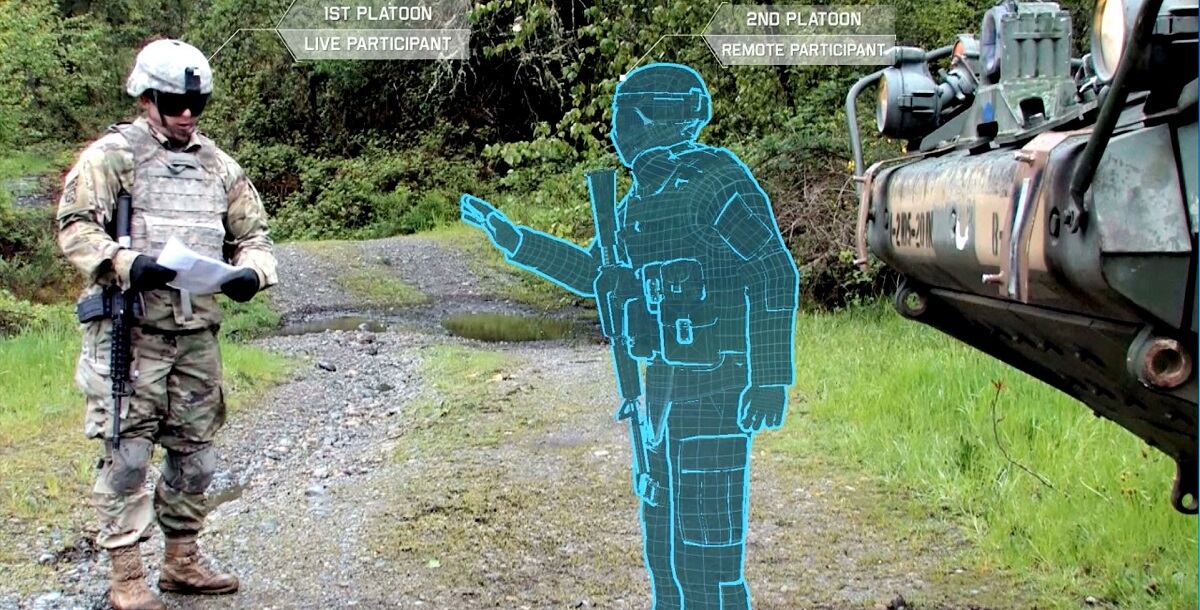A new virtual marksmanship trainer for squads is headed to 26 Army locations early next year and will soon be followed by an early version of the squad immersive trainer.
The squad advanced marksmanship trainer is an immediate development that will feed into a complete overhaul of how the Army and Marine Corps combines the crush of new virtual and augmented technologies with live training events.
At the Association of the United States Army’s annual meeting, Maj. Gen. Maria Gervais, who serves both as the director of the Army’s Synthetic Training Environments Cross-Functional Team and deputy commanding general of the Combined Arms Center-Training, laid out some immediate hits on the virtual training front while also talking about long-term goals for the programs.
The squad immersive trainer has been a concept the Army’s pursued since at least 2009, but much of the hardware and software needed to make it a reality simply didn’t exist at the time, Gervais told the audience.
But recent testing has put a four-soldier stack, wearing augmented reality goggles, into room-clearing exercises at the “Tomato Factory,” an immersive training facility at the Marine Corps’ Camp Pendleton, California. The goggles allow troops to “see” augmented items such as enemies, civilians or other characters and items in the real-world environment.
Think Pokémon Go for close-quarters battle.
While a portable, lightweight device that allows dismounted soldiers to move around a real/virtual combined battlespace is still the goal, the early version due next year will be a more static station where soldiers link up and respond to scenarios presented to them, Gervais said.
To make these trainers even more realistic, the Heads Up Display 3.0 is under development and expected to be operating by late 2020 or early 2021. That will lighten the hardware load on soldiers and allow for kits that can be taken to the field and incorporated in both training and real-world scenarios.
Right now, much of the virtual goggles require wiring and bulky power sources that limit them to smaller indoor training areas like virtual studios or limited, room-clearing type exercises.
But both squad trainers and the Heads Up Display, tactile assets that low-level troops will see soon, are simply pieces of a large mosaic being built by teams from the simulations cross-functional team and Program Executive Office Simulation, Training and Instrumentation, as well as their Marine Corps counterparts.
The main objective in the near term is bringing One World Terrain to a reality.
Right now, developers have 57 different terrain formats for their virtual trainers. At times simply getting terrains matched up and having a variety of systems talking with each other can take longer than the actual exercise being planned.
But One World Terrain would give troops a unified, synchronized playing field, something akin to Google Earth for warfighting.
It would make a secure, plug-and-play virtual world in which units from squads to, some day, divisions or corps commanders, could fight war at scale.
Another effort that’s just as important, Gervais said, is building reconfigurable virtual trainers so that new versions of vehicles, aircraft and other equipment can be quickly upgraded as the technology advances.
Troops also need to have more access to these trainers.
These types of trainers are only available at a dozen locations, mostly major installations or mission training complexes.
That means that units have very little time on the simulators. New tech should allow infantry squads, helicopter pilots or brigades to run exercises conducted virtually at home station.
The Heads Up Display, One World Terrain, virtual trainers and software were used and evaluated by soldiers, Marines and software engineers back in March. Feedback from that event is helping designers rework the items for another troop eval this coming March, Gervais said.
Todd South has written about crime, courts, government and the military for multiple publications since 2004 and was named a 2014 Pulitzer finalist for a co-written project on witness intimidation. Todd is a Marine veteran of the Iraq War.





